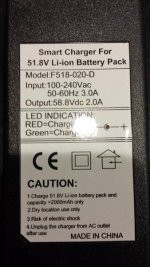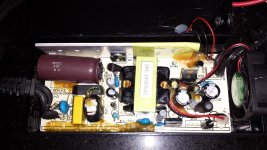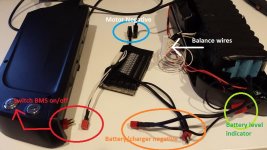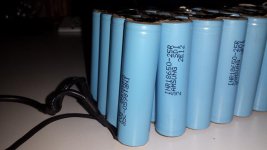guys, I got my second charger today but the damn seller sent me another wrong charger. the good news is that this charger holds steady voltage. The bad news is that it is for a 14s, not my 13s pack. It is a 51.8V charger , output is 58.8Vdc.
The seller told me it will work fine with 13s, but I do not believe him. He says when it gets to full charge, it will turn into trickle charge mode... that may be true, but I'm still un-sure if I should still use this charger. He originally advertised it as 48v 54.6v output...
Anyhow, there is nothing in there that I can see that would allow me to adjust the voltage. No pot or anything. I plugged in this charger to my battery pack just now, and it works fine. For 3-5 minutes, I gained about 0.3V on the entire pack.
However, my question is, if my BMS is rated for 13s 48v, would it shut down the charger as well? of course, I'm not willing to try that to charge it up to find out. Please let me know. I still do like this charger because it's quite small, 2amps, and has a built-in fan. Just that the charger output voltage is 1 cell too high for my liking.







